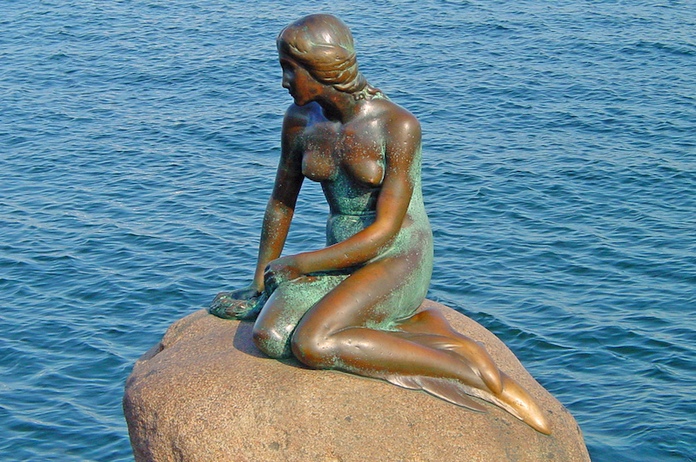Little Mermaid

The Little Mermaid is a bronze statue located in Copenhagen, Denmark, which depicts a mermaid sitting on a rock by the waterside. Despite its small size of 1.25 meters and weight of at least 175 kilograms, it has become a famous tourist attraction, surprising many visitors with its diminutive stature. While some statues are purely decorative, others are landmarks, and most have stories to tell, often symbolizing supernatural phenomena. The Little Mermaid is just one of the many renowned sculptures around the world that captivate the imagination of people from all walks of life.
Lions of Delos
The “Lions of Delos” is actually a group of ancient Greek sculptures of lions that were originally located on the island of Delos in Greece. The sculptures date back to the 7th century BCE and were believed to have been placed at the entrance to the sacred lake on the island. They are now located in the Archaeological Museum of Delos.
Mother Russia Statue
The Mother Russia statue, also known as “The Motherland Calls,” is a statue that depicts a woman raising a sword high into the air as if calling upon the people to defend their country. It was built to commemorate the Battle of Stalingrad, one of the bloodiest battles of World War II, in which the Soviet Union successfully defended the city of Stalingrad (now known as Volgograd) from German forces. The statue stands at a height of 85 meters, making it one of the tallest statues in the world.
Olmec Heads
The Olmec civilization was one of the earliest Mesoamerican civilizations, flourishing from around 1400 BCE to 400 BCE. The Olmec are famous for their large stone heads, which are thought to depict their rulers. The heads are among the most recognizable and mysterious artifacts of ancient Mesoamerica. Today, several of these heads can be seen in museums in Mexico, as well as in the United States and other countries.
Mount Nemrut
Mount Nemrut is actually known for its giant statues, not stones. The mountain is home to a collection of massive statues of gods and kings from the ancient Kingdom of Commagene, dating back to the 1st century BC. These statues, which are up to 30 feet tall, were constructed by King Antiochus I Theos of Commagene as a way to demonstrate his power and his connection to the divine. Today, Mount Nemrut is a popular tourist destination and a UNESCO World Heritage Site.
David Statue
Yes, that’s correct! Michelangelo’s David statue is considered one of the greatest masterpieces of Renaissance art. It depicts the Biblical figure of David, who defeated the giant Goliath with a sling and a stone. The statue stands 5.17 meters (17 feet) tall and is located in the Accademia Gallery in Florence, Italy. It is admired for its detailed anatomy and realistic expression, and has become a symbol of human strength and beauty.
Great Sphinx
The Great Sphinx is a limestone statue located on the Giza Plateau in Egypt, and it is believed to have been built by ancient Egyptians during the reign of Pharaoh Khafra around 2500 BC. The statue measures 73.5 meters in length and 20 meters in height and depicts the body of a lion with the head of a human. It is thought to represent the Egyptian deity, Horus, or the Pharaoh himself. Despite its ancient origins, the construction of the statue remains shrouded in mystery, and there are many debates about its age, purpose, and symbolism.
Statue of Liberty
The Statue of Liberty is one of the most iconic landmarks in the world. It was gifted to the United States by France in 1886 as a symbol of friendship and liberty between the two nations. The statue is located on Liberty Island in New York Harbor and has become a symbol of freedom and democracy for people around the world. It stands 151 feet tall and is made of copper, with a torch in one hand and a tablet in the other inscribed with the date of the Declaration of Independence.
Christ the Redeemer
The iconic Christ the Redeemer statue stands in Rio de Janeiro, Brazil, representing Jesus Christ. It stands 30 meters tall, and its arms stretch 28 meters wide, overlooking the city from the summit of Corcovado Mountain. The statue was completed in 1931 and has since become an iconic symbol of Rio de Janeiro and Brazil. It attracts millions of tourists each year who come to admire its grandeur and stunning panoramic views of the city.
Moai
The Moai statues, created by Polynesian colonizers in 1250 AD, are located on Easter Island, one of the most remote islands in the world. Have you had the opportunity to visit any of these impressive statues?